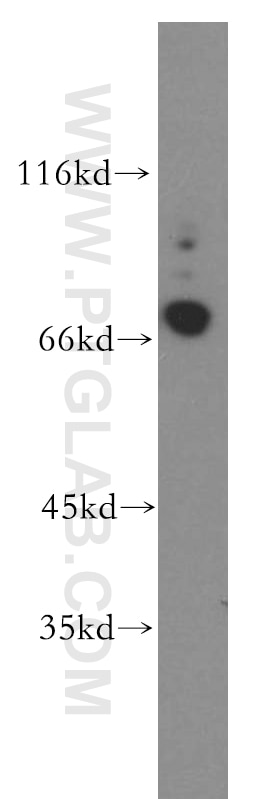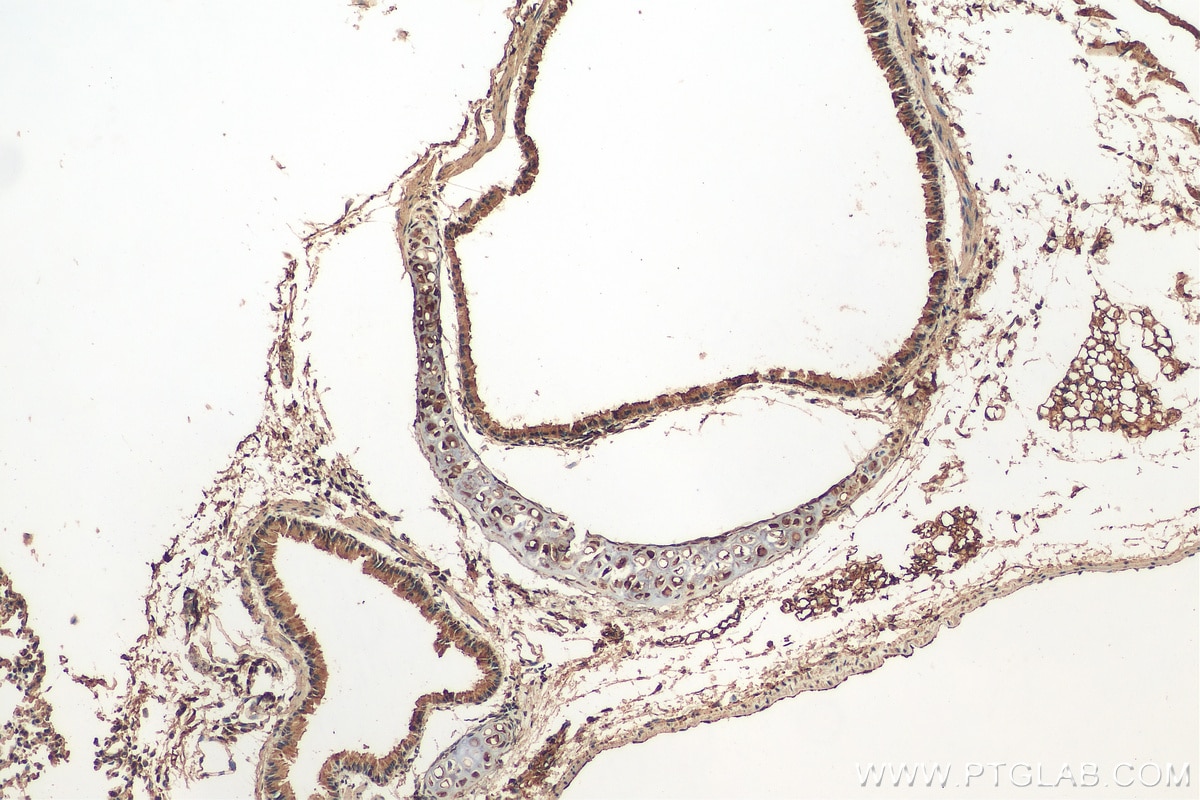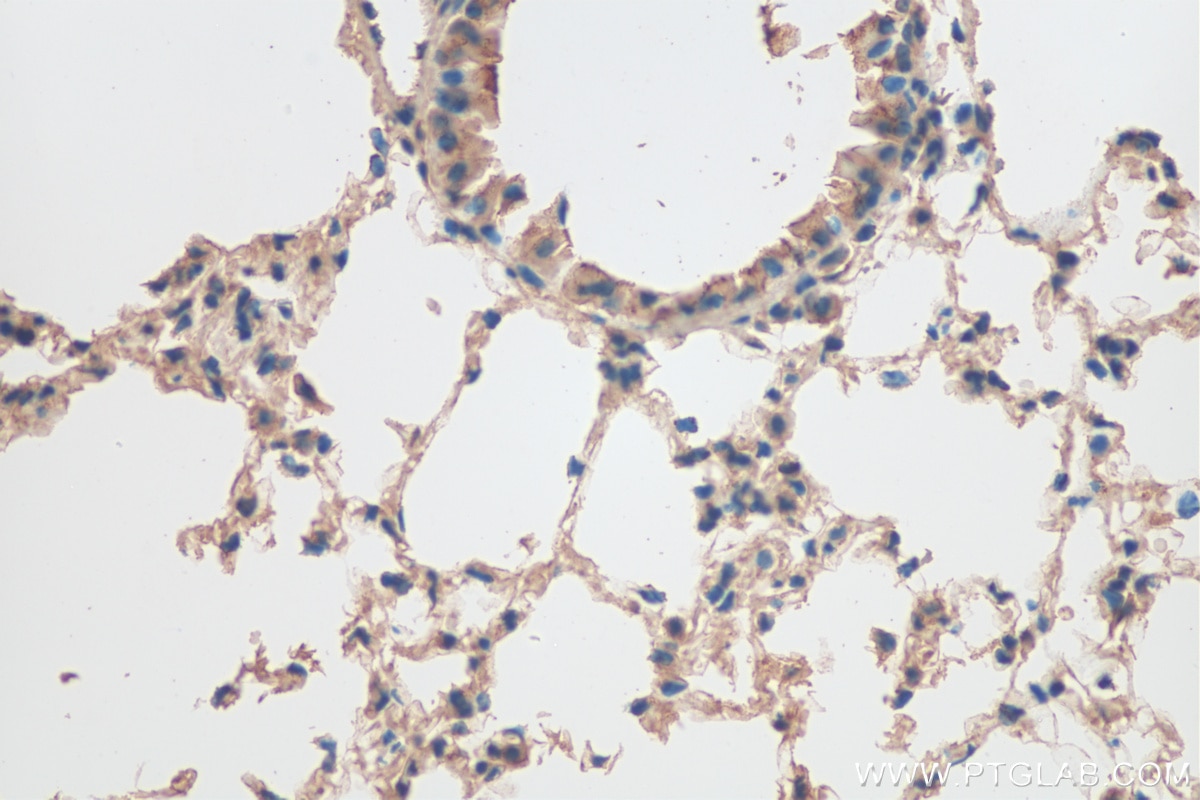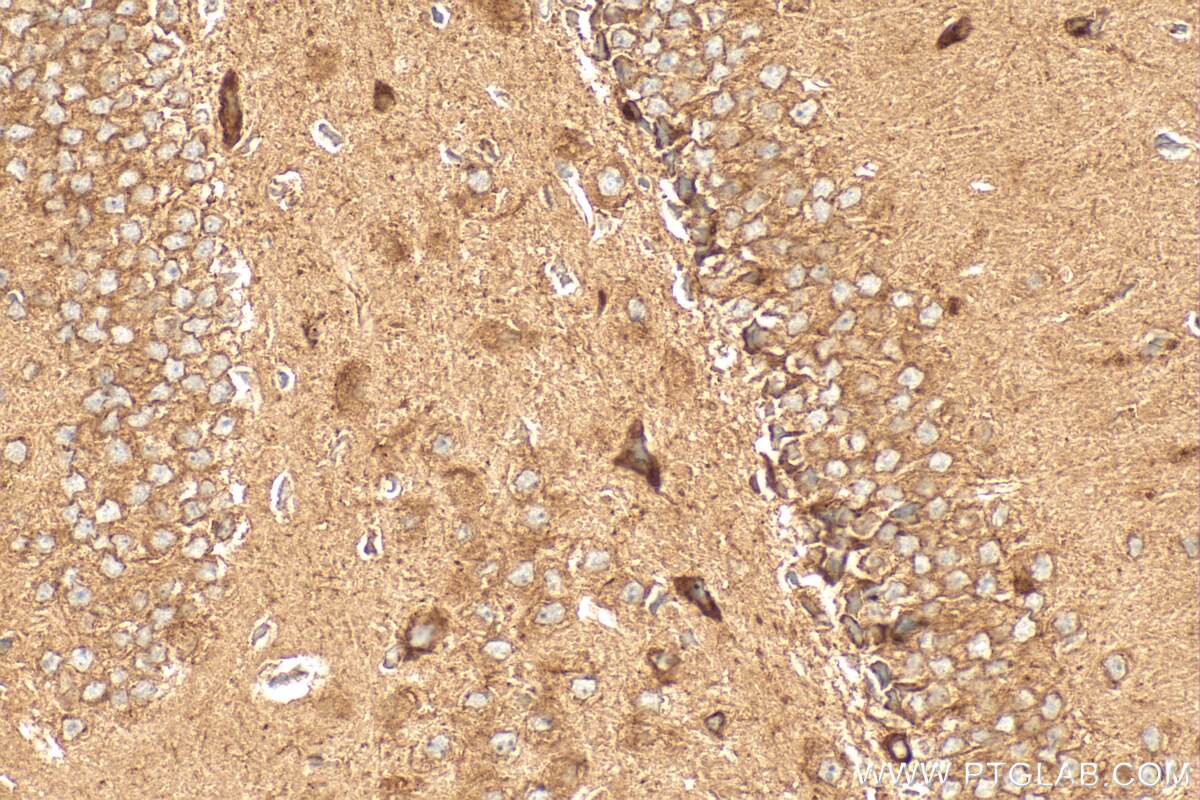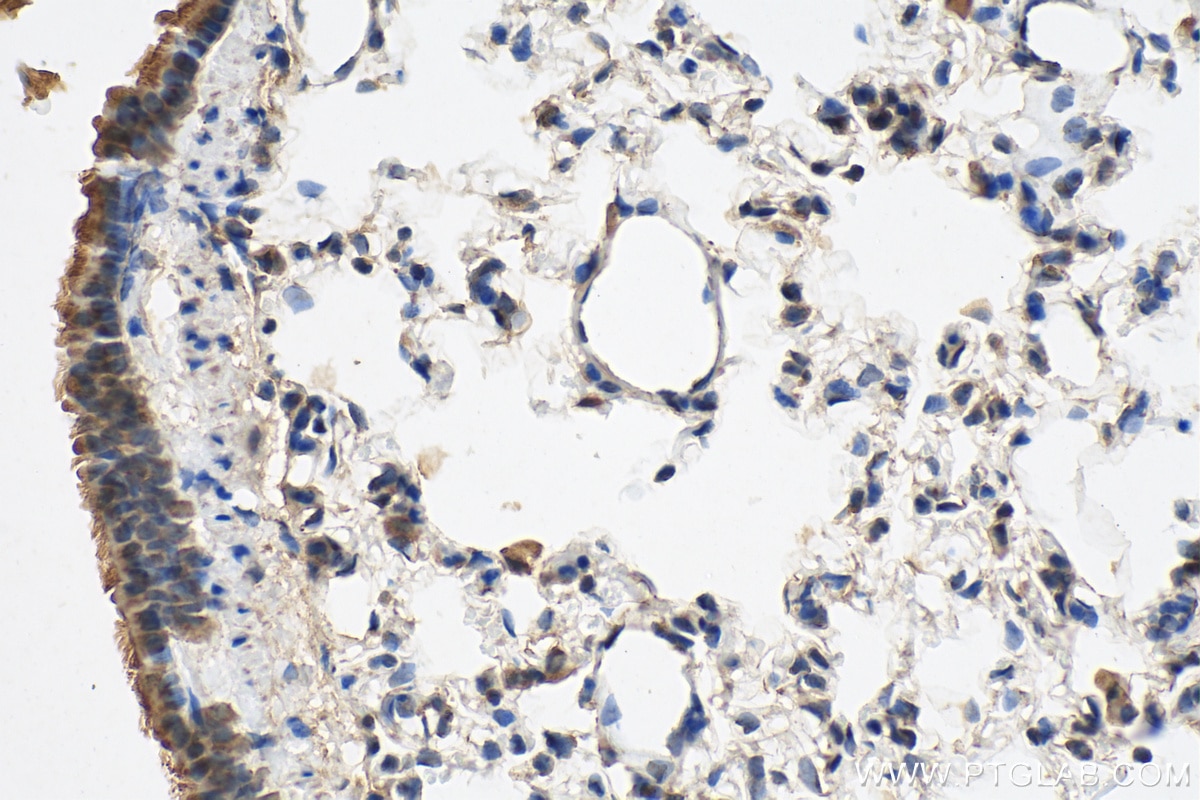Validation Data Gallery
Tested Applications
| Positive WB detected in | human brain tissue |
| Positive IHC detected in | mouse lung tissue, mouse brain tissue, rat lung tissue Note: suggested antigen retrieval with TE buffer pH 9.0; (*) Alternatively, antigen retrieval may be performed with citrate buffer pH 6.0 |
Recommended dilution
| Application | Dilution |
|---|---|
| Western Blot (WB) | WB : 1:500-1:1000 |
| Immunohistochemistry (IHC) | IHC : 1:50-1:500 |
| It is recommended that this reagent should be titrated in each testing system to obtain optimal results. | |
| Sample-dependent, Check data in validation data gallery. | |
Published Applications
| WB | See 2 publications below |
| IHC | See 2 publications below |
| IF | See 1 publications below |
Product Information
13001-1-AP targets CRTAC1 in WB, IHC, IF, ELISA applications and shows reactivity with human, mouse, rat samples.
| Tested Reactivity | human, mouse, rat |
| Cited Reactivity | human |
| Host / Isotype | Rabbit / IgG |
| Class | Polyclonal |
| Type | Antibody |
| Immunogen |
CatNo: Ag3673 Product name: Recombinant human CRTAC1 protein Source: e coli.-derived, PGEX-4T Tag: GST Domain: 99-451 aa of BC034245 Sequence: VYGNWNGPHRLYLQMSTHGKVRFRDIASPKFSMPSPVRTVITADFDNDQELEIFFNNIAYRSSSANRLFRVIRREHGDPLIEELNPGDALEPEGRGTGGVVTDFDGDGMLDLILSHGESMAQPLSVFRGNQGFNNNWLRVVPRTRFGAFARGAKVVLYTKKSGAHLRIIDGGSGYLCEMEPVAHFGLGKDEASSVEVTWPDGKMVSRNVASGEMNSVLEILYPRDEDTLQDPAPLECGQGFSQQENGHCMDTNECIQFPFVCPRDKPVCVNTYGSYRCRTNKKCSRGYEPNEDGTACVGTLGQSPGPRPTTPTAAAATAAAAAAAGAATAAPVLVDGDLNLGSVVKESCEPSC 相同性解析による交差性が予測される生物種 |
| Full Name | cartilage acidic protein 1 |
| Calculated molecular weight | 661 aa, 71 kDa |
| Observed molecular weight | 68-72 kDa |
| GenBank accession number | BC034245 |
| Gene Symbol | CRTAC1 |
| Gene ID (NCBI) | 55118 |
| RRID | AB_10638787 |
| Conjugate | Unconjugated |
| Form | |
| Form | Liquid |
| Purification Method | Antigen affinity purification |
| UNIPROT ID | Q9NQ79 |
| Storage Buffer | PBS with 0.02% sodium azide and 50% glycerol{{ptg:BufferTemp}}7.3 |
| Storage Conditions | Store at -20°C. Stable for one year after shipment. Aliquoting is unnecessary for -20oC storage. |
Protocols
| Product Specific Protocols | |
|---|---|
| IHC protocol for CRTAC1 antibody 13001-1-AP | Download protocol |
| WB protocol for CRTAC1 antibody 13001-1-AP | Download protocol |
| Standard Protocols | |
|---|---|
| Click here to view our Standard Protocols |
Publications
| Species | Application | Title |
|---|---|---|
Cell Rep Integrative single-cell meta-analysis reveals disease-relevant vascular cell states and markers in human atherosclerosis | ||
Am J Rhinol Allergy Analysis of CRSsNP Proteome Using a Highly Multiplexed Approach in Nasal Mucus | ||
Sci Rep CRTAC1 identified as a promising diagnosis and prognostic biomarker in lung adenocarcinoma | ||
Mol Oncol A DIA-MS-based proteomics approach to find potential serum prognostic biomarkers in glioblastoma patients |

